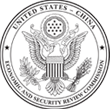Search Results
Research
In 2018, China reported several cases of African swine fever, or ASF, a highly contagious disease that is deadly to pigs. The disease has now spread throughout China, where it has already reduced the country’s hog population by more than 50 million, and throughout other countries in Asia. This report provides an overview of the ASF outbreak in China, the implications for U.S. exports of pork and animal feed products, and the risks posed to U.S. food safety and food security.
Research
In April 2019, the Hong Kong government formally proposed an extradition bill that would—if passed into law—increase the territory’s susceptibility to Beijing’s political coercion and further erode Hong Kong’s autonomy. The bill, which followed a minimal public comment period and could face a final vote before July 2019, would amend Hong Kong’s laws to allow ad hoc extraditions to mainland China and over 100 countries and territories without mutual extradition arrangements with Hong Kong. In addition to further intruding into Hong Kong’s affairs, the proposed bill could create serious risks for U.S. national security and economic interests in Hong Kong, and potentially violate several key provisions of the U.S.-Hong Kong Policy Act of 1992, which outlines U.S. policy toward the territory. This issue brief provides background on the bill and observers’ concerns with the proposal, risks posed to U.S. interests in Hong Kong, and considerations for Congress.
Research
Chinese companies utilize a variety of methods—many of them covert or coercive—to acquire valuable technology, intellectual property (IP), and knowhow from U.S. firms. These efforts are often made at the direction of and with assistance from the Chinese government, part of Beijing’s larger effort to develop its domestic market and become a global leader in a wide range of technologies. These acquisition attempts frequently target advanced technologies such as artificial intelligence, biotechnology, and virtual reality, which are still in the early stages of development but could provide dual military and civilian capabilities in the future.
This report explores six methods used by Chinese companies to acquire U.S. technology and IP, including (1) foreign direct investment, (2) venture capital investment, (3) joint ventures, (4) licensing agreements, (5) cyber espionage, and (6) talent acquisition programs. It then examines the effectiveness of existing U.S. regulations to assess and address the risks of increased technology transfers to China.
Hearings
This hearing will examine the implications for the United States of a commercial, scientific, diplomatic, and military strategic competition with China. The hearing will begin with two individual panels comprising a strategic planning perspective on competition with China in space and a current Administration official’s assessment of the balance of power in space and China’s current space-based surveillance capabilities, respectively. The first full panel will examine China’s pursuit of global space leadership, focusing on China’s international space partnerships, its views on international law in space, and its exploration ambitions. The second panel will address the role of military-civil fusion in China’s space ambitions, including the role of military-civil fusion in context of China’s national space goals, U.S. competition with Chinese companies in the international satellite industry, and the adequacy of U.S. export controls. Finally, the third panel will examine China’s military space activities, focusing on its national military space goals and doctrine, its military space and counterspace capabilities, and the intersection of cyber and space in China’s strategy and operations.
